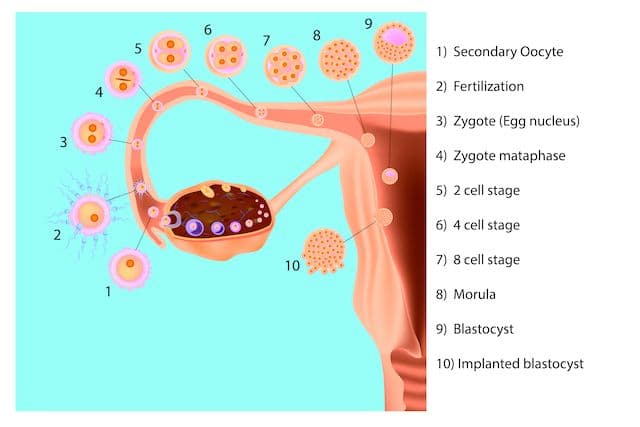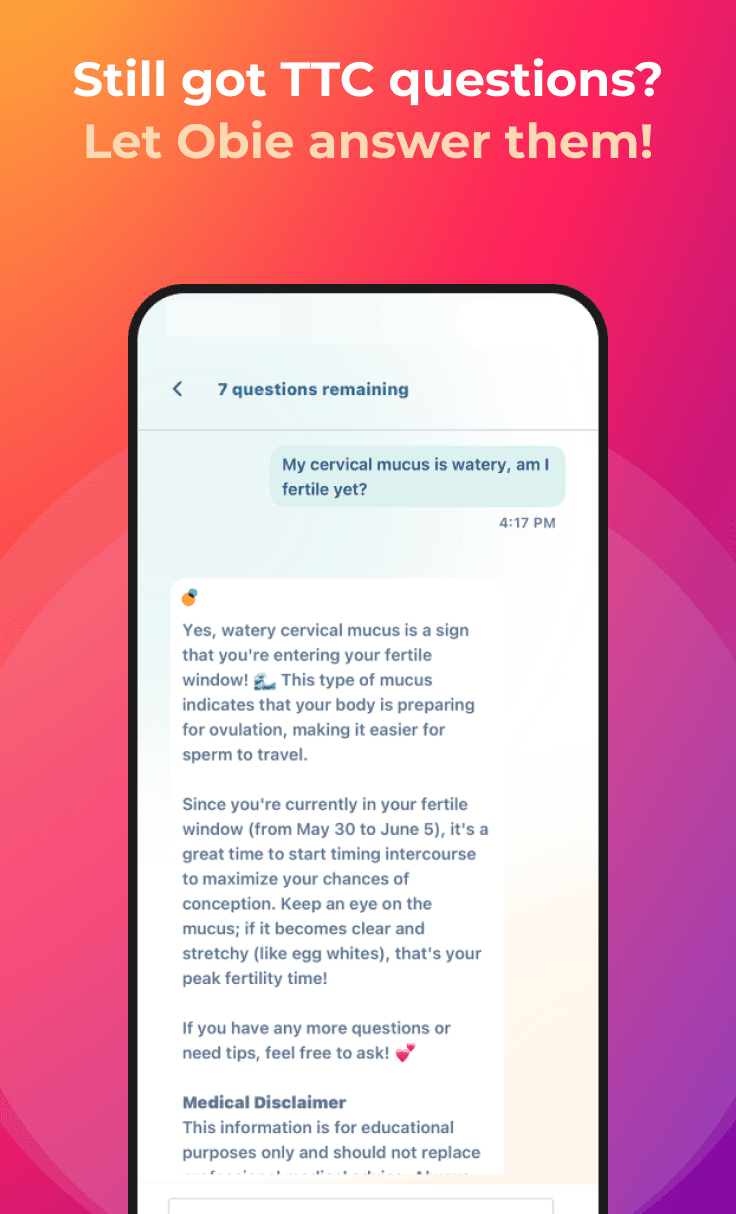Displaced Window of Receptivity and Implantation Timing
Getting Pregnant
Obie Editorial Team

Implantation, the attachment of the embryo to the uterine lining, occurs on average 9 days after ovulation and fertilization, normally ranging between 6 to 12 days.
Besides fertilization, embryo attachment to the uterine lining (implantation) represents the most critical step of the reproductive process in many species. It consists of a unique biological phenomenon, by which the blastocyst becomes intimately connected to the maternal endometrial surface to eventually form the placenta that will provide an interface between the growing fetus and the maternal circulation.
The implantation window and timing
Timing of implantation is among the parameters needed for successful implantation to take place. There is only a specific period of time during which implantation is possible; this is the “implantation window” or "window of implantation (WOI)". The implantation window is started by preparations in the endometrium of the uterus, both structurally and in the composition of its secretions. On average, the implantation timing occurs 9 days after ovulation and fertilization, with a range of 6-12 days.
The personalized window of implantation
It has previously been assumed that the WOI is always the same in all women. That assumption has recently been challenged, and several studies have shown that the WOI may be different among women. Analyses of endometrial receptivity, the readiness of the endometrium to accept the embryo implantation, demonstrates a personalized WOI (pWOI) that is displaced in one out of four patients suffering from recurrent implantation failure (RIF) of endometrial origin and illustrates the utility of a personalized endometrial diagnostic approach.
What is the ERA endometrial receptivity array test?
The endometrial receptivity array (ERA) is a test that checks whether the endometrium is receptive to implantation. Check here too. In one study, obesity was shown to change the personalized window of implantation (WOI). Another study showed that changing embryo transfer based on the personalized WOI can improve IVF success rates. And in this study IVF success rates were improved with ERA
What is needed for successful implantation
There are several steps involved in successful implantation:
- A normal and functional embryo at the blastocyst developmental stage
- A receptive endometrium,
- A synchronized interaction between maternal and embryonic tissues.
- The correct implantation window and timing
What happens just before implantation
The embryoblast spends approximately 72 hours in the uterine cavity before implanting. In that time, it cannot receive nourishment directly from the blood of the mother, and must rely on secreted nutrients into the uterine cavity, e.g. iron and fat-soluble vitamins.
What happens with the endometrium prior to implantation?
Prior to implantation and to optimize implantation the uterine lining, the endometrium, increases thickness, becomes more vascularized and its glands grow to be tortuous and boosted in their secretions reaching their maximum about 1 weeks after ovulation.
What happens with the endometrium after implantation?
After implantation, the uterine lining now called the decidua changes during the early stages of pregnancy especially during implantation. Its function as a surrounding tissue is replaced by the definitive placenta.
Growth and implantation
In addition to nourishment, the endometrium secretes several steroid-dependent proteins, important for growth and implantation. Cholesterol and steroids are also secreted. Implantation is further facilitated by synthesis of matrix substances, adhesion molecules and surface receptors for the matrix substances.
Adaptation of uterus and receptive endometrium to optimize implantation
To enable implantation, the uterus and the endometrium go through changes in order to be able to receive the embryo.








